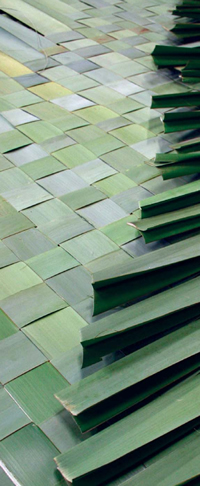Kaitiaki environmental impact assessment and reporting (KEIR-A)

A new framework aims to assist kaitiaki practitioners facing growing workloads to respond to day-to-day resource management issues. Māori organisations increasingly have to address complex and interconnected cultural, social, environmental and economic issues and interact and engage with many agency, industry and community groups.
Frameworks and tools are important ways of organising and applying knowledge to address complex and multi-dimensional issues and the KEIA-R framework developed by Manaaki Whenua could help identify issues of cultural connection to landscape-use and cultural values within a Māori community.
Environmental planning and Environmental Impact Assessments (EIA) generally lack significant Māori participation and involvement, which results in a paucity of qualitative and quantitative data about cultural impacts to community health and well-being from activities such as roading, mining, contaminants, agricultural, industrial and urban development.
Māori are also increasingly asserting their rights to effectively manage natural and cultural resources through governance mechanisms that achieve greater participation, ownership, and co-management. However, effective management requires meaningful ways to connect to, articulate, monitor and report on impacts to specific tangible and spiritual values that support kaitiaki and kaitiakitanga (environmental guardianship, mana whenua, rangatiratanga).
Increasing Māori community capability to effectively engage in these processes through the use of a ‘tool-box’ approach was the focus of this research. We worked with kaitiaki end- users, who identified their issues and concerns and requirements for a framework that can scope the issues, identify appropriate tools, and help with responses and decision-making.
A case study approach has been used to develop the KEIA-R framework, driven by local issues to identify a Māori community’s aspirations, values, needs, and expected outcomes for their hapū and representative marae. The framework was developed collaboratively with Māori organisations under the umbrella of the Waahi Whaanui Trust (an established Māori Trust within the tribe of Waikato-Tainui) and with six marae that have a strong genealogical connection to their ancestral river and lands. We provide examples of the use of this framework particularly in response to increasing pressures (e.g. degradation, exploitation, and privatisation) on both natural and cultural resources.
The KEIA-R framework addresses cultural-environmental issues and required actions and is designed to scope the needs of kaitiaki and offers a step-by-step guide and process for kaitiaki practitioners in specific regions or districts. It is designed to help kaitiaki respond to day-to-day cultural-environmental issues (e.g. processing resource consents) based on their needs, goals, aspirations and desired outcomes. The KEIA-R is based on elements that are relevant to defining cultural connection to landscape-use and cultural values as it relates to environmental issues.
